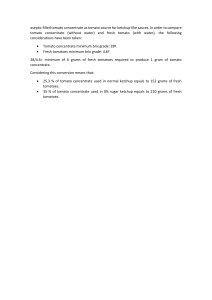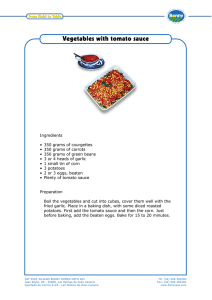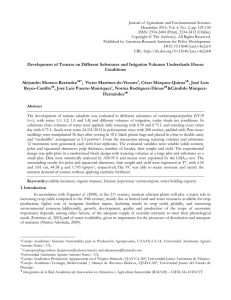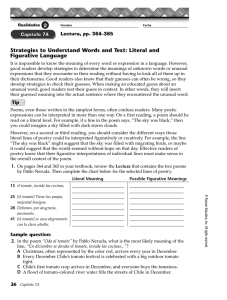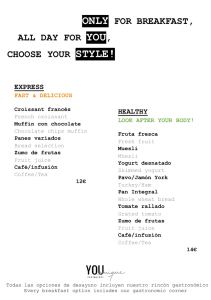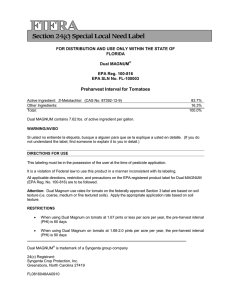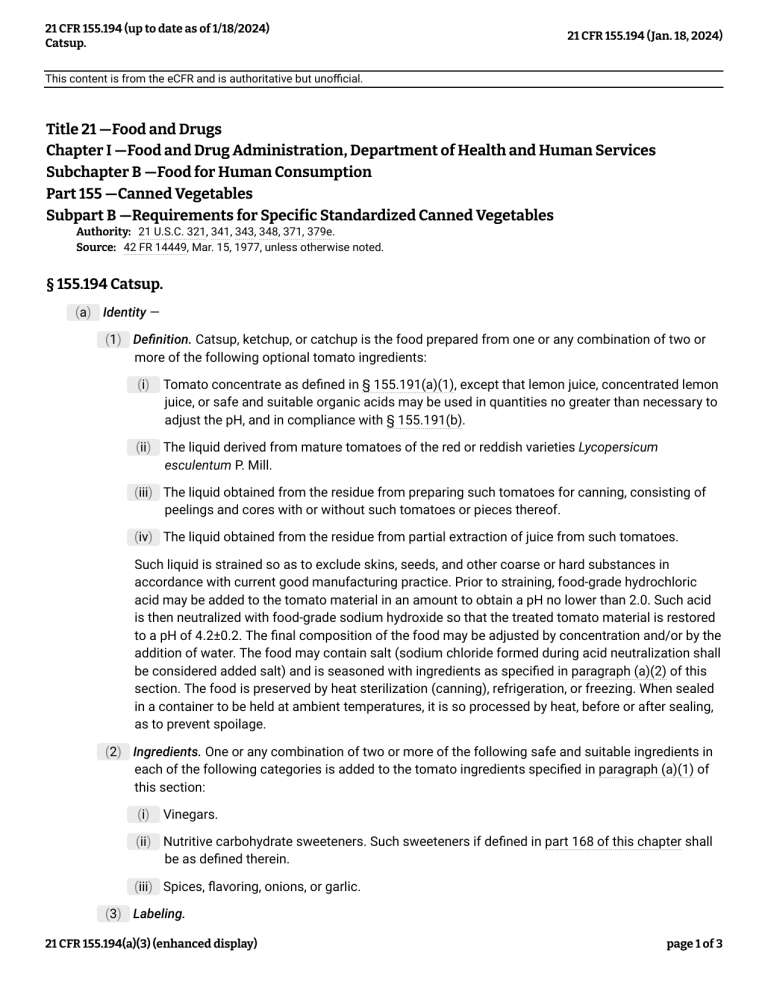
21 CFR 155.194 (up to date as of 1/18/2024) Catsup. 21 CFR 155.194 (Jan. 18, 2024) This content is from the eCFR and is authoritative but unofficial. Title 21 —Food and Drugs Chapter I —Food and Drug Administration, Department of Health and Human Services Subchapter B —Food for Human Consumption Part 155 —Canned Vegetables Subpart B —Requirements for Specific Standardized Canned Vegetables Authority: 21 U.S.C. 321, 341, 343, 348, 371, 379e. Source: 42 FR 14449, Mar. 15, 1977, unless otherwise noted. § 155.194 Catsup. (a) Identity — (1) Definition. Catsup, ketchup, or catchup is the food prepared from one or any combination of two or more of the following optional tomato ingredients: (i) Tomato concentrate as defined in § 155.191(a)(1), except that lemon juice, concentrated lemon juice, or safe and suitable organic acids may be used in quantities no greater than necessary to adjust the pH, and in compliance with § 155.191(b). (ii) The liquid derived from mature tomatoes of the red or reddish varieties Lycopersicum esculentum P. Mill. (iii) The liquid obtained from the residue from preparing such tomatoes for canning, consisting of peelings and cores with or without such tomatoes or pieces thereof. (iv) The liquid obtained from the residue from partial extraction of juice from such tomatoes. Such liquid is strained so as to exclude skins, seeds, and other coarse or hard substances in accordance with current good manufacturing practice. Prior to straining, food-grade hydrochloric acid may be added to the tomato material in an amount to obtain a pH no lower than 2.0. Such acid is then neutralized with food-grade sodium hydroxide so that the treated tomato material is restored to a pH of 4.2±0.2. The final composition of the food may be adjusted by concentration and/or by the addition of water. The food may contain salt (sodium chloride formed during acid neutralization shall be considered added salt) and is seasoned with ingredients as specified in paragraph (a)(2) of this section. The food is preserved by heat sterilization (canning), refrigeration, or freezing. When sealed in a container to be held at ambient temperatures, it is so processed by heat, before or after sealing, as to prevent spoilage. (2) Ingredients. One or any combination of two or more of the following safe and suitable ingredients in each of the following categories is added to the tomato ingredients specified in paragraph (a)(1) of this section: (i) Vinegars. (ii) Nutritive carbohydrate sweeteners. Such sweeteners if defined in part 168 of this chapter shall be as defined therein. (iii) Spices, flavoring, onions, or garlic. (3) Labeling. 21 CFR 155.194(a)(3) (enhanced display) page 1 of 3 21 CFR 155.194 (up to date as of 1/18/2024) Catsup. (i) 21 CFR 155.194(a)(3)(i) The name of the food is “Catsup,” “Ketchup,” or “Catchup.” (ii) The following shall be included as part of the name or in close proximity to the name of the food: (a) The statement “Made from” or “Made in part from,” as the case may be, “residual tomato material from canning” if the optional tomato ingredient specified in paragraph (a)(1)(iii) of this section or tomato concentrate containing the ingredient specified in § 155.191(a)(1)(ii) is present. (b) The statement “Made from” or “Made in part from,” as the case may be, “residual tomato material from partial extraction of juice” if the optional tomato ingredient specified in paragraph (a)(1)(iv) of this section or tomato concentrate containing the ingredient specified in § 155.191(a)(1)(iii) is present. (iii) Label declaration. Each of the ingredients used in the food shall be declared on the label as required by the applicable sections of parts 101 and 130 of this chapter; except that the name “tomato concentrate” may be used in lieu of the names “tomato puree,” “tomato pulp,” or “tomato paste” and when tomato concentrates are used, the labeling requirements of § 155.191(a)(3)(ii)(a) and (a)(3)(ii)(b) do not apply. (b) Quality. (1) The standard of quality for catsup is as follows: The consistency of the finished food is such that its flow is not more than 14 centimeters in 30 seconds at 20 °C when tested in a Bostwick Consistometer in the following manner: Check temperature of mixture and adjust to 20±1 °C. The trough must also be at a temperature close to 20 °C. Adjust end-to-end level of Bostwick Consistometer by means of the spirit level placed in trough of instrument. Side-to-side level may be adjusted by means of the built-in spirit level. Transfer sample to the dry sample chamber of the Bostwick Consistometer. Fill the chamber slightly more than level full, avoiding air bubbles as far as possible. Pass a straight edge across top of chamber starting from the gate end to remove excess product. Release gate of instrument by gradual pressure on lever, holding the instrument down at the same time to prevent its movement as the gate is released. Immediately start the stop watch or interval timer, and after 30 seconds read the maximum distance of flow to the nearest 0.1 centimeter. Clean and dry the instrument and repeat the reading on another portion of sample. Do not wash instrument with hot water if it is to be used immediately for the next determination, as this may result in an increase in temperature of the sample. For highest accuracy, the instrument should be maintained at a temperature of 20±1 °C. If readings vary more than 0.2 centimeter, repeat a third time or until satisfactory agreement is obtained. Report the average of two or more readings, excluding any that appear to be abnormal. (2) Determine compliance as specified in § 155.3(b). (3) If the quality of catsup falls below the standard prescribed in paragraphs (b) (1) and (2) of this section, the label shall bear the general statement of substandard quality specified in § 130.14(a) of this chapter, in the manner and form therein specified, but in lieu of such general statement of substandard quality when the quality of the catsup falls below the standard, the label may bear the alternative statement, “Below Standard in Quality—Low Consistency.” (c) Fill of container. 21 CFR 155.194(c) (enhanced display) page 2 of 3 21 CFR 155.194 (up to date as of 1/18/2024) Catsup. 21 CFR 155.194(c)(1) (1) The standard of fill of container for catsup, as determined by the general method for fill of container prescribed in § 130.12(b) of this chapter, is not less than 90 percent of the total capacity except: (i) When the food is frozen, or (ii) When the food is packaged in individual serving-size packages containing 56.7 grams (2 ounces) or less. (2) Determine compliance as specified in § 155.3(b). (3) If the catsup falls below the standard of fill prescribed in paragraphs (c) (1) and (2) of this section, the label shall bear the general statement of substandard fill as specified in § 130.14(b) of this chapter, in the manner and form therein specified. [48 FR 3956, Jan. 28, 1983, as amended at 49 FR 15073, Apr. 17, 1984; 58 FR 2883, Jan. 6, 1993] 21 CFR 155.194(c)(3) (enhanced display) page 3 of 3
